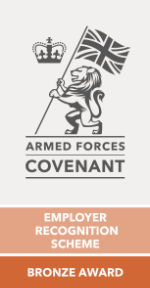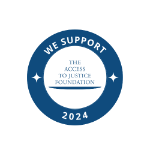The Executive Medical Director of The Shrewsbury and Telford Hospital NHS Trust (SaTH), Dr John Jones commissioned the Royal College of Physicians to undertake an independent review of the neonatology services at SaTH given the higher than average perinatal mortality rate, particularly regarding neonatal deaths. The review focused on 18 cases of neonatal deaths during 2021 – 2022.
The review team consisted of three Consultant Neonatologists, two Consultant Obstetricians, a Consultant Midwife and two Advanced Neonatal Practitioners. Specialist input was also provided via the Royal College of Paediatrics and Child Health, the Royal College of Obstetrics and Gynaecology, and the Royal College of Midwives.
It is noted that care provided to babies by the neonatal services was not viewed as substandard and did not directly contribute to the perinatal mortality. However, examples were located of poor and very poor care during the review. The Healthcare Safety Investigation Branch (HSIB) were already involved in some of these cases.
HSIB, which is now named Maternity and Newborn Safety Investigations (MNSI), can carry out an independent investigation and where relevant, make safety recommendations to improve services at local level and across the whole maternity healthcare system in England. All NHS trusts have to report to MNSI about certain patient safety incidents in maternity care when the specific criteria is met.
The review commented that, “neonatal mortality at SATH cannot be considered in isolation to neonatal mortality across the region. The West Midlands has the highest infant mortality in England (with 5.6 deaths per 1,000 live births), and this has been the picture since 2000.” The review suggests the need to investigate the drivers underpinning this data, including social determinants, and poverty and ethnicity factors.
The review team also raised concerns, “regarding paediatric mortality, with the system within which SATH sits reported to have been flagged as one of the highest areas for paediatric mortality in national datasets.” While the review team acknowledge this was not within the terms of their review, it pointed to the need for work to take place across the system and the region, to understand how child and infant deaths can be reduced.
It is clear that SaTH are trying to rebuild trust within the community as the Executive Medical Director has written individually to each family to advise them of the review, and to invite each family to meet with senior clinical members of the Trust to discuss the report findings and their own individual care findings.
These meetings have begun taking place and, as well as addressing and apologising for any poor or very poor care, these meetings are happening in order to listen to the families. Within the Donna Ockenden report, it was highlighted that the voice of the family was not heard. In representing a number of these families, I also know that a big factor in the families coming forward in seeking legal advice is certainly because of that.
The overall impression of the review team was of a maternity service that had taken huge strides over the past 18 months to two years (following publication of the first Ockenden report in December 2020) to rebuild the service, staff teams, processes, and culture.
However, the neonatal service, which had not received the same level of external scrutiny, was in a different place. It was noted that there had been large changes in terms of nursing leadership challenges, which had impacted morale and although the review team did not identify evidence to indicate that the quality of care provided to babies by the neonatal service was substandard, or directly contributing to the unit’s outlier status in terms of perinatal mortality, there were still concerns over care.
The review team’s overall ratings for the quality of care provided across the 18 cases were as follows:
- Five cases were graded ‘good practice’
- Eight cases were graded ‘room for improvement’ for clinical reasons
- Two cases were graded ‘room for improvement’ for both clinical and organisational reasons
- No cases were graded ‘room for improvement’ for organisational reasons alone
- Two cases were graded ‘unsatisfactory’
Therefore, of the 18 cases, 12 cases required improvement or were unsatisfactory, which are truly stark figures.
There were also some very concerning issues raised within the report which included:
- Babies on the delivery suite and neonatal unit were not tagged – risk of abduction which was categorised as a high current risk level
- Single paediatric specialist registrar on night shifts across paediatrics and neonates which was also categorised as a high current risk level
- Risk of not maintaining guidelines reviews, updates and benchmarking against national guidance was categorised as an extreme risk level
Alongside opportunities to strengthen care, the review team identified some examples of excellent care: specifically, three of the 18 cases examined by the review team were graded excellent care for the obstetric journey and one case also demonstrated excellent end of life care.
Other highlights of the review included the positive evolution in organisational culture evident in the maternity service and stronger family engagement due to learning from previous incidents.
The bereavement midwives were said to receive ‘exceptional feedback’ from parents and had been working with bereaved fathers, who can often be overlooked in terms of engagement.
In terms of maternity services, the report states that relationships between Obstetricians and Midwives post Ockenden were reported to be ‘excellent’. The department had evolved considerably over the preceding five years. A great deal of work had been undertaken to address cultural issues and improve working relationships in response to the Ockenden review. The last 18 to 24 months had marked a new level of stability, following patterns of high turnover across all senior management roles.
Conclusion
It is clear from this report that there is a problem across the region, but it does not specifically set out why the SaTH mortality rates were so high.
Whilst we commend the Trust for taking on board the feedback from the Donna Ockenden review and trying to re-build trust within the community, more needs to be done.
We are still receiving enquiries regarding current stillbirth and neonatal deaths with very similar areas of concern as were identified in 2020.
We are grateful that the wider maternity service is being considered as it is important to us that women feel safe giving birth in our community. We hope that this review delves further into why so many babies are dying at SaTH so this can be addressed and concerns surrounding birth at SaTH alleviated.
"*" indicates required fields

 Back
Back
















